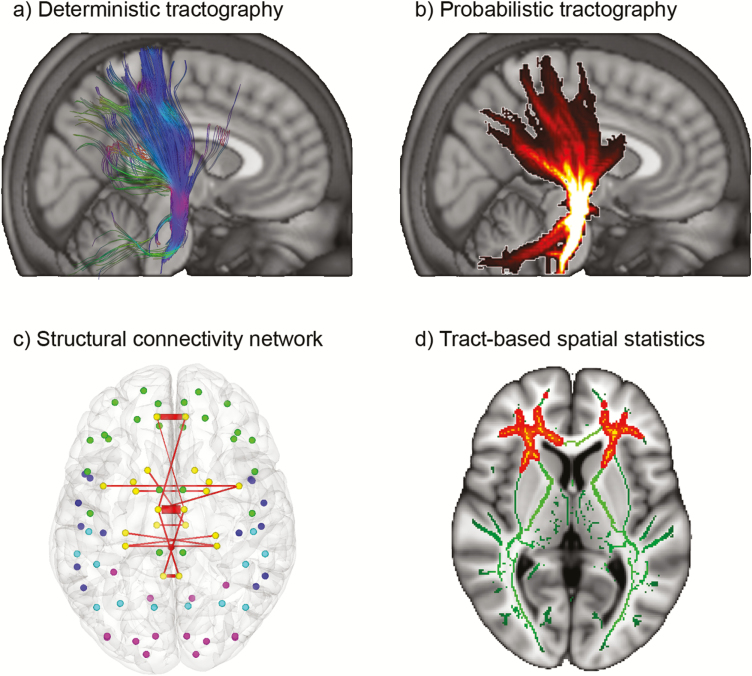Figure 2.
Structural connectivity obtained from diffusion tensor imaging. (a) Deterministic tractography with the seed region defined in the cerebral peduncle yields the corticospinal tract. Each streamline gets the same weight; color coding reflects the direction (blue, inferior-superior; green, anterior-posterior; red, left-right). (b) Probabilistic tractography of the same tract as in a, with each streamline reflecting the probability of how robustly a pathway can be reconstructed in the presence of noise (bright color: higher probability). (c) Evaluation of whole-brain structural network parameters showed increased interhemispheric connectivity in male-to-female transsexual subjects particularly subcortical-cortical connections, which where distinct from male and female controls (reprinted by permission from Oxford University Press) (Hahn et al., 2015b). (d) Tract-based spatial statistics (TBSS) enables a regional assessment of white matter microstructure. In contrast to c, the local mean diffusivity of transsexuals showed a transition from the biological sex to the actual gender identity (Kranz et al., 2014).

